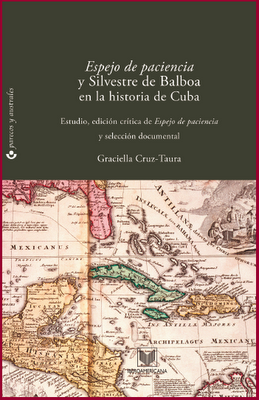1.1 The work “Mirror of Patience”, by Silvestre de Balboa, published in 1608

This work, the only one attributed to Silvestre de Balboa (Gran Canaria, 1563 – Puerto Príncipe, 1644), was published in 1608 (although it would later suffer a secular silence), recounts the episode of the kidnapping of Bishop Fray Juan de Cabezas Altamirano in 1604 by the French pirate Gilberto Girón and his fellow countrymen who held him prisoner on their ship, his rescue and the subsequent revenge of the people of Bayamo, at the hands of Gregorio Ramos and his men.
It consists of two cantos: the first covers the kidnapping and the rescue, and the second describes the execution of the revenge. It is composed in royal octaves, the quintessential strophic structure of the cultured epic, of Italian origin.
The text is biased by the author’s Manichaeism, which categorizes the characters absolutely as good or evil. It is understood that although the real existence of all the characters mentioned has been confirmed, the moralizing treatment given to them in the text distances them from their real-life counterparts. The bishop and his religious patience in enduring captivity are exalted to limits that break with any principle of verisimilitude, while the pirate is attributed all the characteristics of the antihero; and the rescuer is idealized as an epic titan.
Rather than expressing the personalities of the participants or the true nature of the events, the work, as an example of the so-called poetry of circumstance cultivated in these centuries, constitutes a reflection of insularity, both through its references to flowers, fruits, and waters in the natural landscape, as well as the “social landscape,” which includes the rise of smuggling to circumvent the strict trade laws imposed by the Spanish Crown and the spectrum of social classes involved in each of the episodes discussed. The simplicity of the style distances it from the globally popular Baroque style and brings it closer to popular perception.
The text was not discovered until 1838 by researcher José Antonio Echevarría, who published a fragment in the magazine “El Plantel.” The publication of the entire work would take several years; one of the most valuable editions in terms of complementary critical studies was that carried out by Cintio Vitier in 1962. Another, more recent edition, significant for its critical rigor and for placing the work in its documentary and historical context, was conceived in 2009 by Spanish researcher Graciela Cruz-Taura, entitled “Mirror of Patience and Silvestre de Balboa in the History of Cuba.”
The intrinsic values of “Mirror of Patience” are modest when compared to the rebirth of literature and the arts that had been experienced in Europe and Latin America, yet some verses stand out for their lyrical treatment: “They leap onto the ground with gallant spirit; / they tread proudly on the fine sand, / they fire bullets through the cold air, / as if they were in their own country, not in a foreign one.”
The text is preceded by six sonnets that, while not highly representative of this metrical modality, do reflect the existence of a poetic endeavor that already reflected the island’s material and spiritual sphere. In short, despite the aforementioned limitations, the work “Mirror of Patience” as a whole constitutes a sample worthy of study and a source of contributions to the process of shaping our literary identity.








